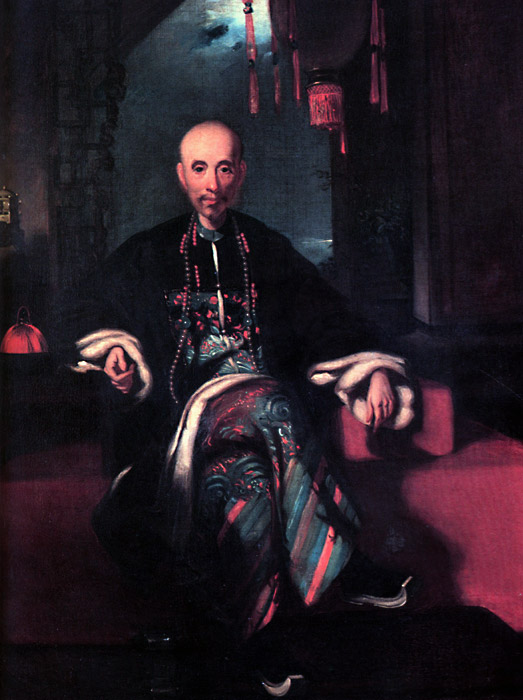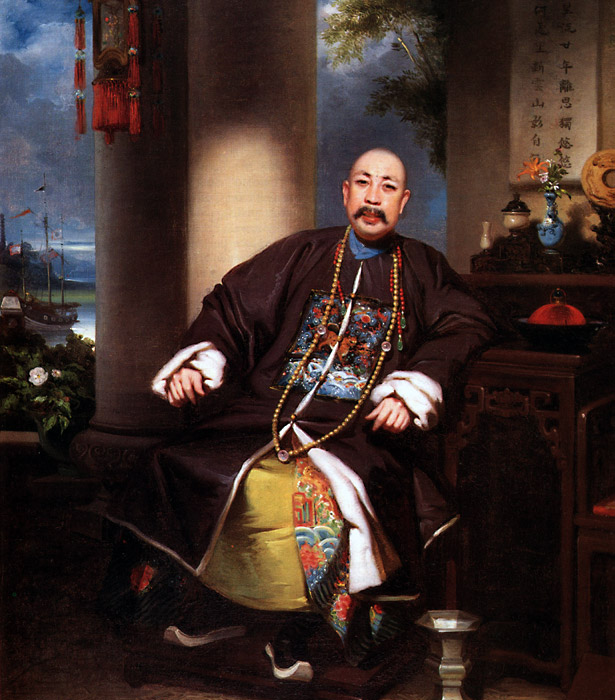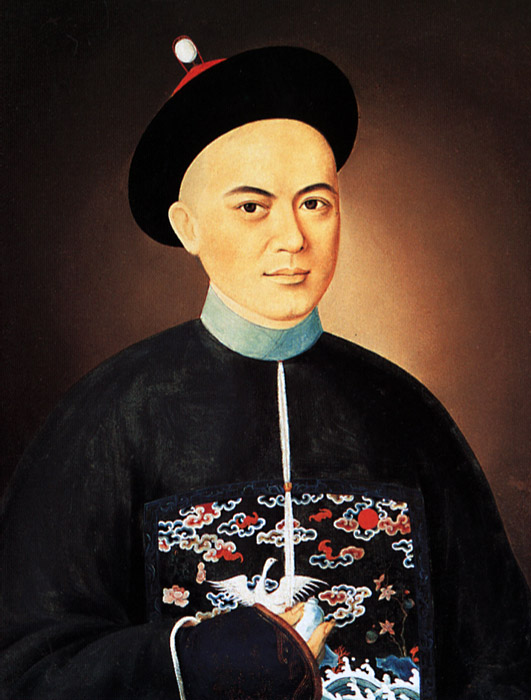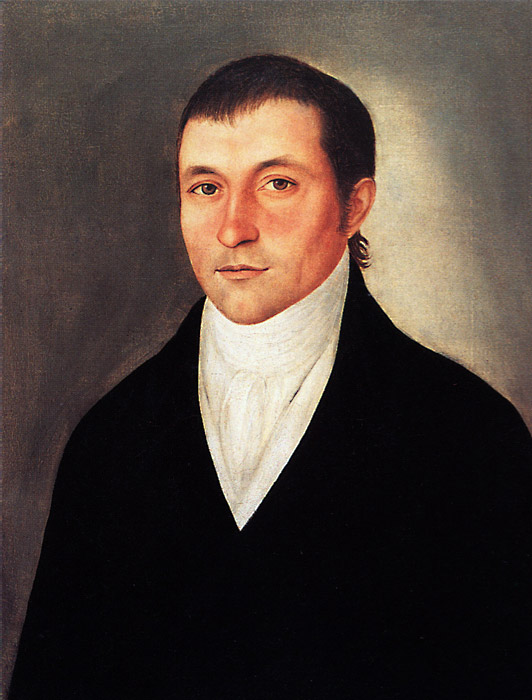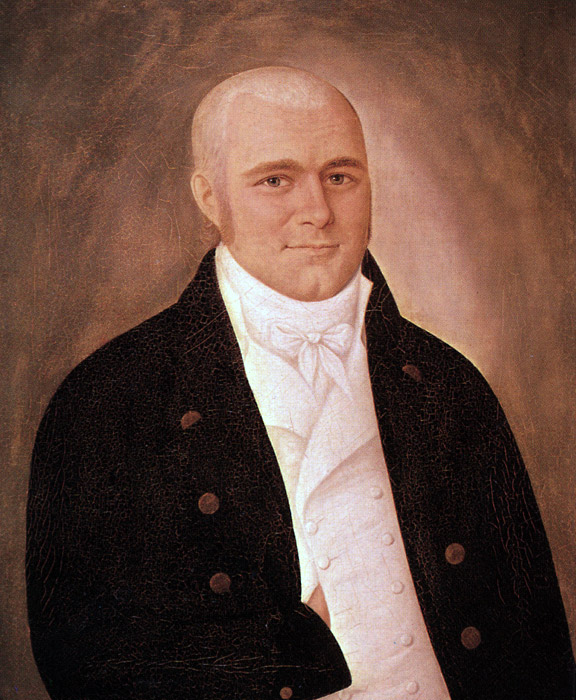“...the Chinese authorities were so jealous and so afraid of the foreigners, that they allowed none but the best Chinese merchants to deal with them. The famous Co-Hong of Canton, which consisted of Hou-qua, Mou-qua and others, was an association of the highest commercial rank, and possessed a monopoly of the foreign trade, granted by the Government because it was to be trusted.” Charles M. Dyce, The Model Settlement (London, 1906).
“The Hong Merchant Mouqua,”
ca. 1840s by Lam Qua
[cwPT_1840s_ct79_Mouqua]
Cha Tinqua (also spelt Chau Teinqua and Chwan Tenqua) was described once as “too timid to embark on uncertain speculations.” Even so, he developed a reputation for shrewd trading and became head of Ponkequa Hong in the 1730s. He lived with Chetqua, a gold broker.
“Tinqua”
[cwPT_1840s_ct78_Tenqua]
Eshing was a Canton silk and tea merchant. His tea was of such high quality that it sold for 50 percent more than that of other merchants. Because of his reputation he was sought by Western traders to inspect their purchases of tea.
“Portrait of the Silk Merchant Eshing,”
School of Spoilum, ca. 1805
Peabody Essex Museum
[cwPT_1800-05_M364_Eshing]
Captain Richard Wheatland (1786–1861)
was the first president of the East India Marine Society. This portrait was
painted in Canton by Spoilum or a follower. It was common practice
for Western merchants such as Captain Wheatland to have their
portraits painted by Chinese artists, and for
Chinese merchants to give portraits of themselves to Western
colleagues as souvenirs. One such portrait is that of the
well-known Canton silk merchant Eshing, by
Spoilum.
Captain Richard Wheatland
School of Spoilum, ca. 1804
Peabody Essex Museum
[cwPT_1800-05_M22879_Wht]
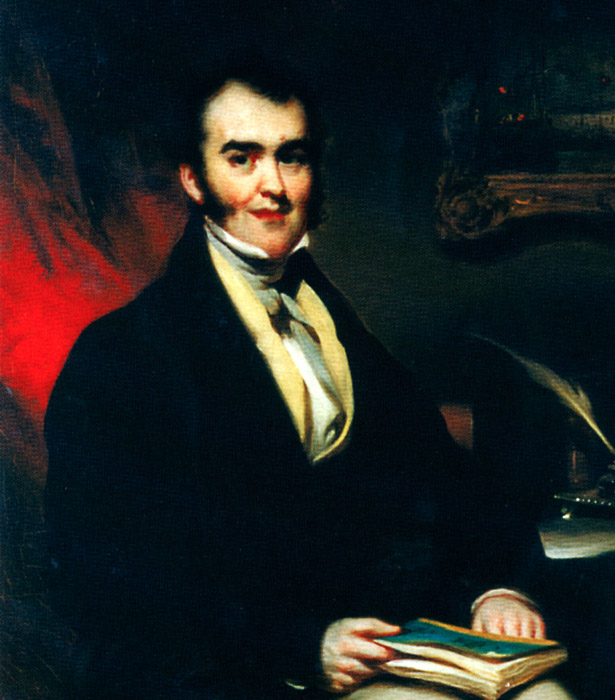
American businessman and trader William Henry Low (Harriet Low's uncle) was the senior partner in charge of Russell and Company from 1828 to 1833. The company traded in silk, tea, and opium, and was the first permanent American firm in Canton. Low recruited his nephew, A.A. Low, as the confidential agent for Howqua, who presumably dealt with Chinese criminal gangs on Russell and Company's behalf.
“William Henry Low,”
Peabody Essex Museum
[cwPT_WllmHenryLow_PEM_eis2]
Captain William Story, born August 18, 1774, was one of 18 siblings and the half-brother of Supreme Court Justice Joseph Story. Under his command, the ship Friendship of Salem anchored at Canton from October 10 through November 5, 1803. After a pirate attack off the Sumatran coast, Captain Story chose to pursue the life of merchant and ship
owner in his hometown of Marblehead, Massachusetts.
“William Story of Salem, MA,”
by Spoilum, 1804
Peabody Essex Museum
[cwPT_1804_ct46_Story]
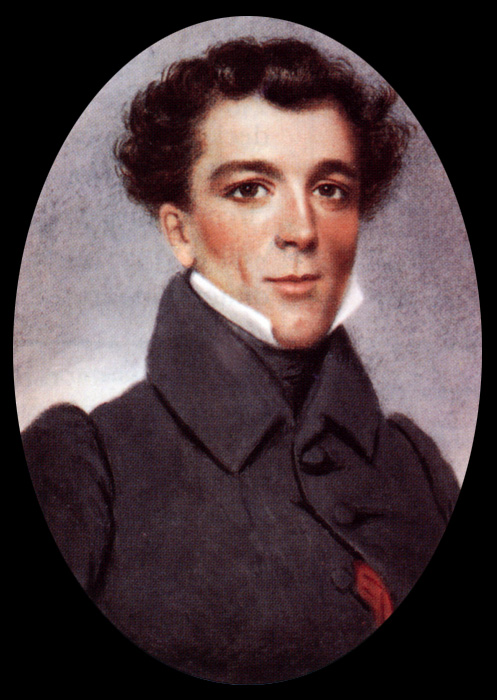
At the age of 13, Robert Bennet Forbes sailed to China under the command of his uncles, Salem merchants James and Thomas H. Perkins. "We arrived on the 16th December [1826]...I went up the coast (with a lot of opium)... after waiting several days for the coming of the merchants, I was compelled by my orders to return... This was one of the earliest trips made up the coast by an American vessel." Robert Bennet Forbes, Personal Reminiscences (Boston, 1882). His uncles joined with Russell and Company in 1830, and by 1839 Forbes was in charge of the company.
“Robert Bennet Forbes”
[cwP_rbforbes]

Wu Ping-Chien, known as Howqua, lived from 1769 to 1843. As the
preeminent hong merchant he amassed one of the greatest fortunes of the early 19th century. Worth $26,000,000 in 1830, he invested in American railroads and other new technology. Renowned in the West, his wax figure was exhibited at Madame Tussaud’s in London and a clipper ship was named after him.
"Howqua" by George Chinnery, 1830
[cwPT_1830_howqua]
Chinese and Western
Merchants
of the Canton Trade
